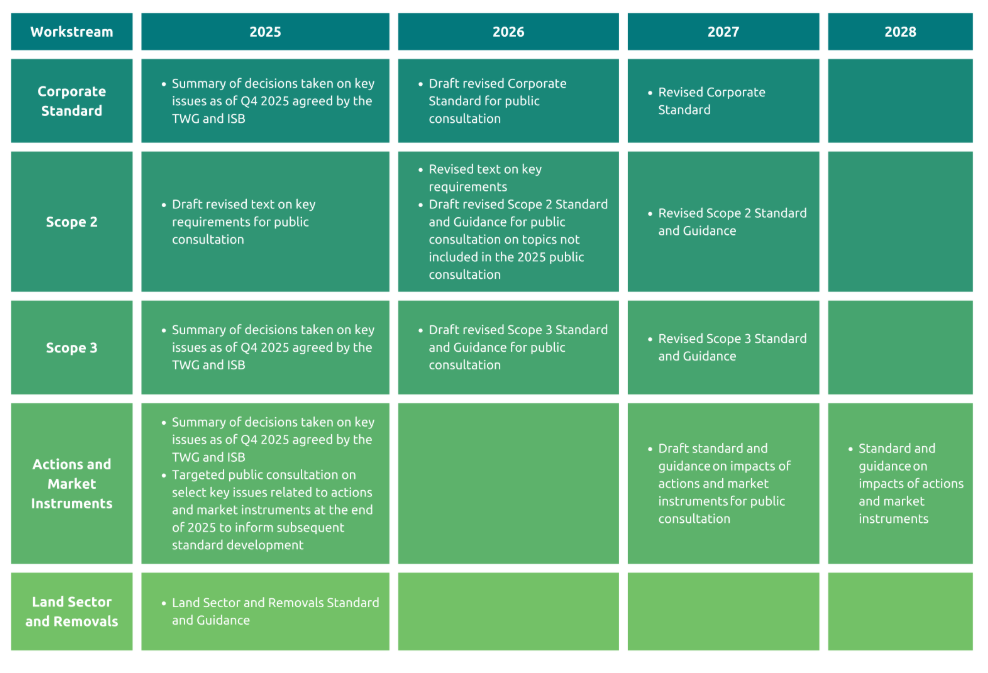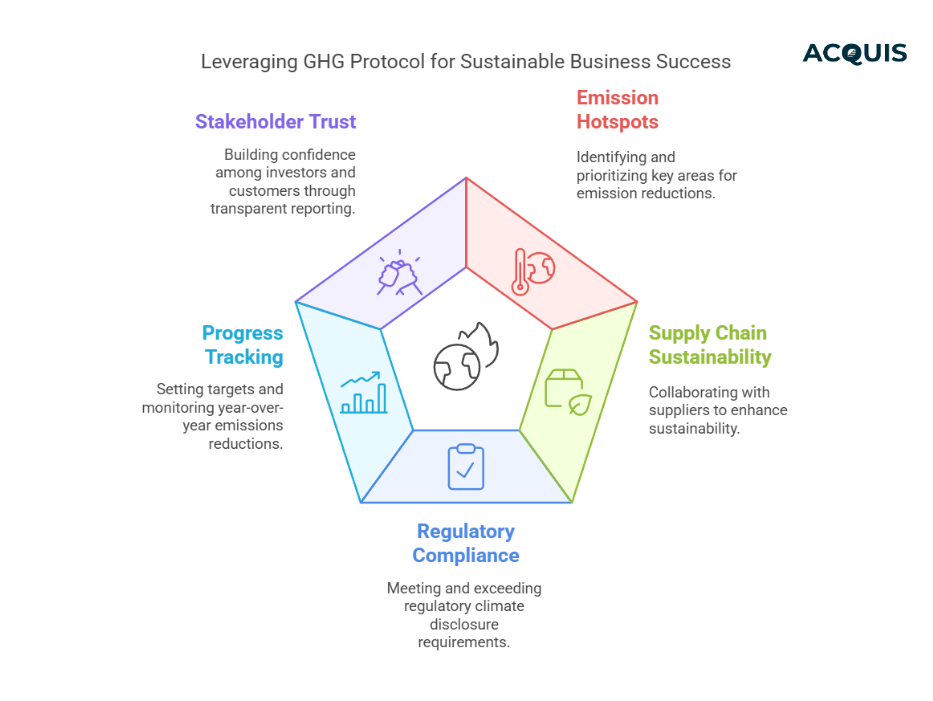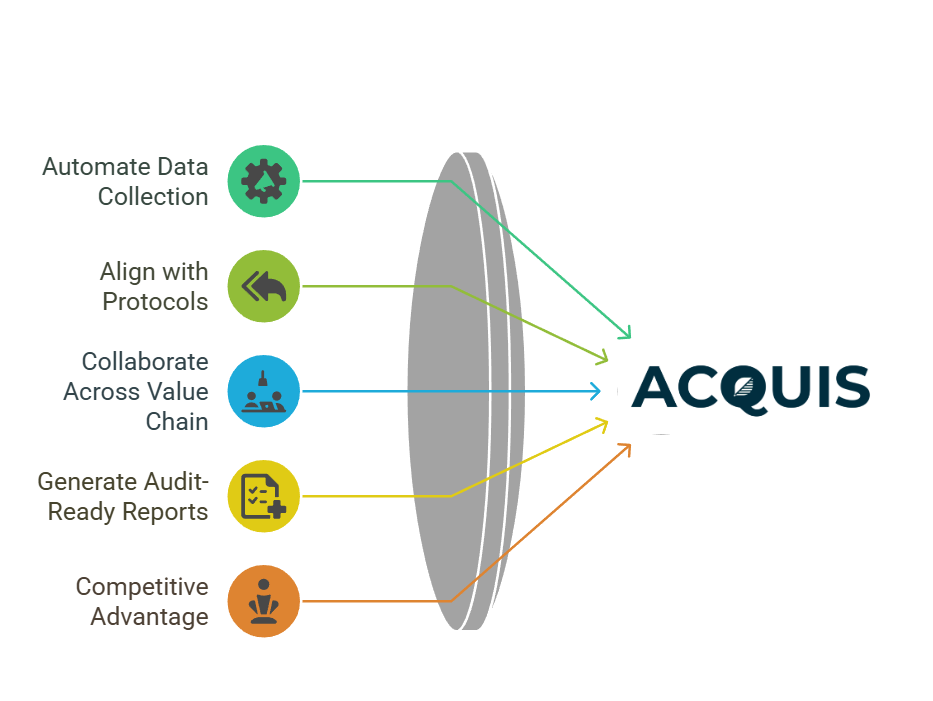Table of Contents
As businesses face growing pressure to tackle climate change and showcase their environmental responsibility, precise and thorough reporting of greenhouse gas (GHG) emissions has become an essential part of corporate sustainability strategies.
The Greenhouse Gas (GHG) Protocol, a globally recognized framework for measuring and managing emissions, plays a vital role in this process.
Lets explore the importance of the GHG Protocol, the recent enhancements to its reporting standards, and how these updates are helping businesses better manage their environmental impact.
What is the Greenhouse Gas (GHG) Protocol?
The GHG Protocol is a widely accepted accounting tool developed by the World Resources Institute (WRI) and the World Business Council for Sustainable Development (WBCSD). It provides a standardized framework for companies and organizations to measure, report, and reduce their GHG emissions.
The protocol helps businesses understand their carbon footprint by categorizing emissions into three distinct scopes:
- Scope 1: Direct emissions from owned or controlled sources (e.g., emissions from company-owned vehicles or manufacturing plants).
- Scope 2: Indirect emissions from the generation of purchased electricity consumed by the company.
- Scope 3: All other indirect emissions that occur in the value chain (e.g., emissions from business travel, product usage, and supply chain activities).
These scopes provide companies with a clear structure to assess and manage their emissions across their operations and supply chains.
The GHG Protocol is undergoing a multi-year update of its corporate standards and guidance.
Check for updates here

Enhancements to the GHG Protocol Reporting Standards
The GHG Protocol has undergone significant updates in recent years, reflecting advancements in climate science, regulatory changes, and the increasing demand for better sustainability practices. Here are some key updates to the GHG Protocol reporting standards:
1. Expanded Scope 3 Reporting
Historically, many companies focused primarily on Scope 1 and Scope 2 emissions. However, Scope 3 emissions—which account for a significant portion of a company’s total carbon footprint—were often overlooked.
Now, the GHG Protocol is placing greater emphasis on Scope 3 reporting, which includes emissions from a company’s entire value chain—supplier emissions, employee commuting, product disposal, and more.
Why Scope 3 Matters:
- Scope 3 emissions can represent up to 70% or more of a company’s total carbon footprint, depending on the industry.
- By expanding Scope 3 reporting, the GHG Protocol encourages companies to adopt a holistic view of their emissions and take steps to reduce them across the value chain.
- It fosters collaboration between businesses and suppliers, enabling long-term sustainable practices.
2. Sector-Specific Guidelines
To make GHG accounting more relevant and actionable, the GHG Protocol has introduced sector-specific guidelines tailored to industries like manufacturing, energy, transportation, and agriculture.
How Sector-Specific Standards Help:
- Different sectors face unique emissions challenges. For example, the energy sector has high Scope 1 emissions, while agriculture may face land use and methane issues.
- These guidelines help businesses identify the most relevant sources and implement targeted reduction strategies.
3. Streamlining Reporting and Calculation Methods
The GHG Protocol simplifies the reporting process by introducing user-friendly tools and calculation templates to assist companies—especially SMEs—with emissions tracking.
How GHG Tools Help:
- Simplifies complex data collection and reporting processes.
- Encourages broader participation in sustainability efforts.
- Ensures consistent, accurate emissions data even when companies lack in-house expertise.
4. Greater Focus on Transparency and Verification
In response to stakeholder demand, the GHG Protocol has strengthened its focus on third-party verification of emissions data.
Why Verification Matters:
- Builds trust with investors, customers, and regulators.
- Supports ESG strategies by offering credible, audit-ready data.
- Drives continuous improvement in sustainability performance.
Reference Links
- WRI: Scope 3 Standard
- WBCSD: Sector-Specific Guidance
- GHG Protocol Tools
- GHG Protocol Verification Process
How the GHG Protocol Helps Businesses
The GHG Protocol provides a standardized approach to carbon accounting, enabling organizations to:

- Identify Emission Hotspots: Prioritize reduction efforts by understanding emissions across Scopes 1, 2, and 3.
- Enhance Supply Chain Sustainability: Collaborate with suppliers to improve sustainability performance.
- Meet Regulatory Requirements: Stay ahead of evolving climate disclosure laws and avoid penalties.
- Track and Report Progress: Set science-based targets and monitor year-over-year reductions.
- Build Stakeholder Trust: Transparent reporting increases confidence among ESG-conscious investors and customers.
Stop wasting hours on spreadsheets – your GHG data deserves better
Whether you're preparing for CSRD, navigating SEC climate disclosures, or looking to reduce Scope 3 emissions across your supply chain—Acquis Compliance helps you get there faster.

Our platform enables you to:
- Automate GHG data collection
- Align with GHG Protocol and ESG frameworks
- Collaborate across your value chain
- Generate audit-ready reports
- Turn compliance into a competitive advantage
Talk to our team to see how Acquis can simplify your GHG emissions reporting—accurately, efficiently, and at scale.
